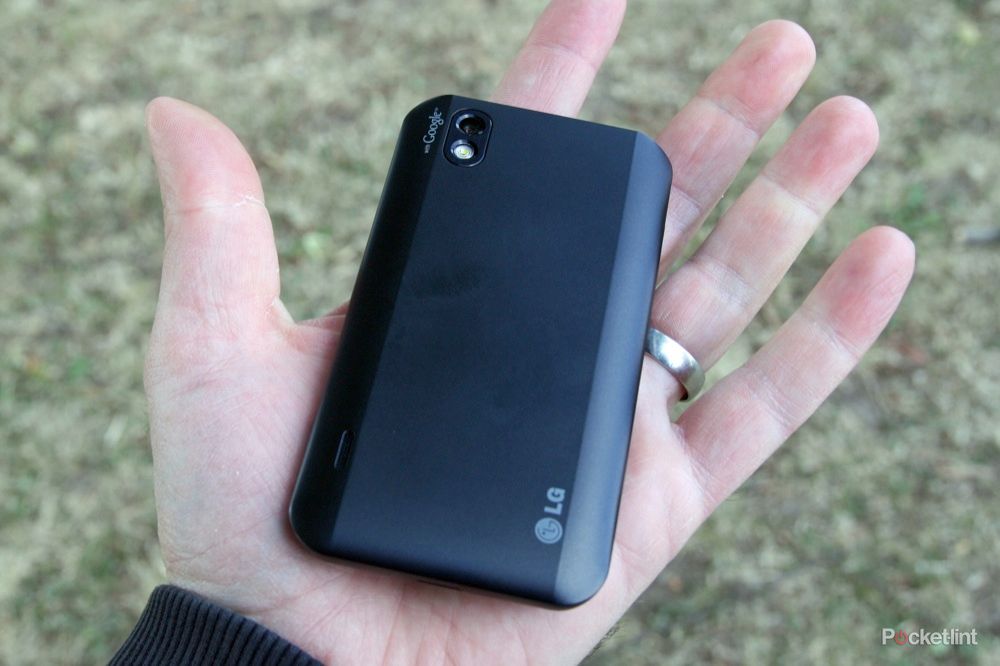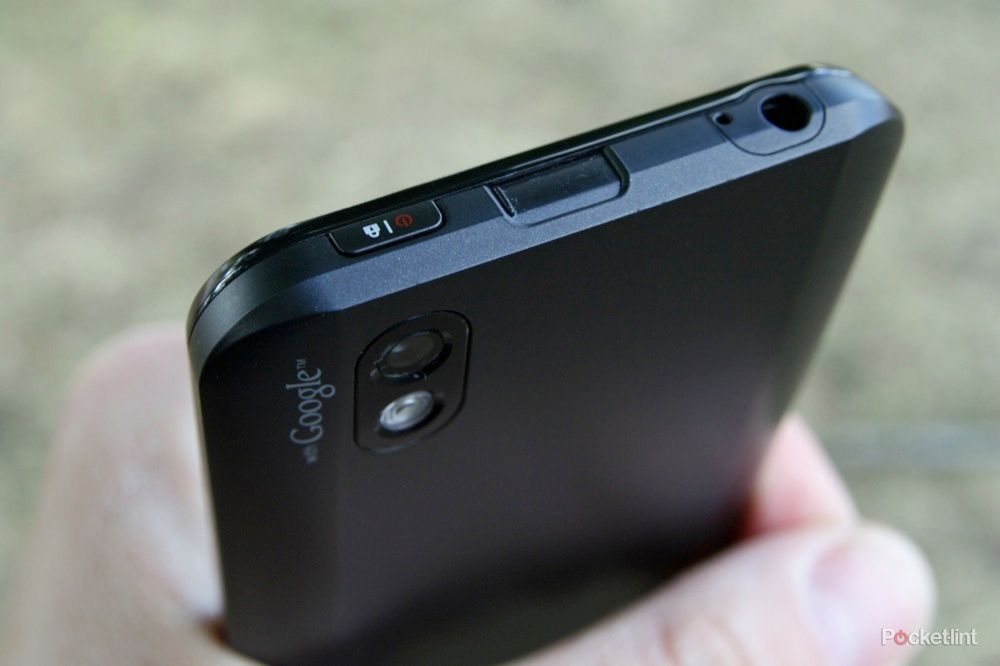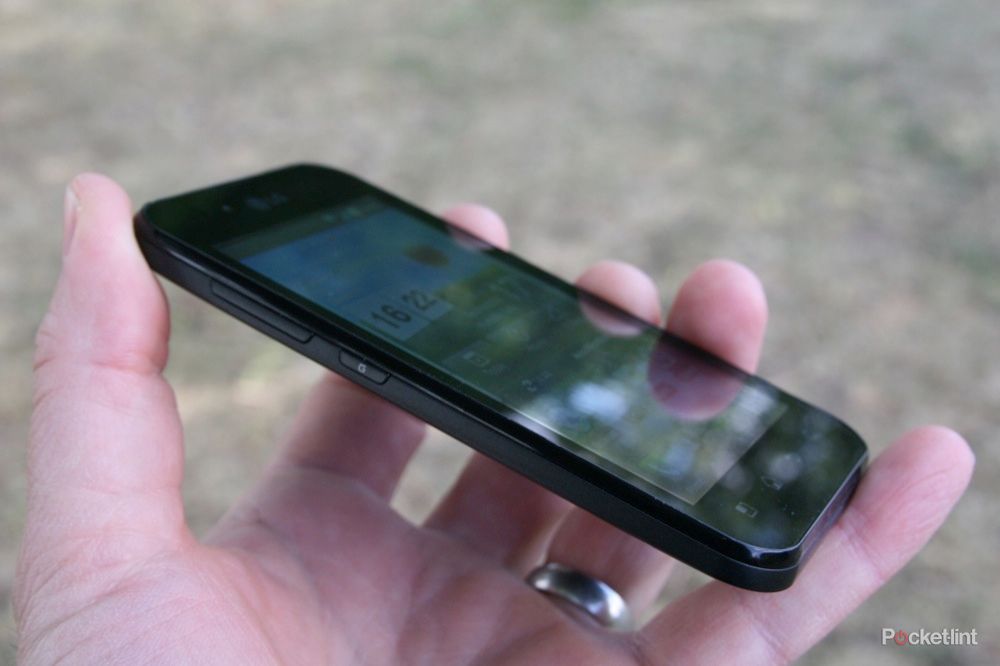The LG Optimus Black offers up the sort of specs that where considered high-end in 2010. The advent of dual core devices, higher resolution displays and cameras has created a superphone category - occupied by the sibling LG Optimus 2X for example - leaving the Optimus Black to slot into a sub high-end position. Make no mistake, the Optimus Black is a very capable device, offering the sort of specs you’ll find on the Sony Ericsson Xperia Arc or last year’s Samsung Galaxy S.
Our quick take
The LG Optimus Black is something of a mixed bag. Eye-catching design and a great screen are paired with a phone that isn’t a great performer on the multimedia front. For the most part we like LG’s light touch with Android: it still leaves you with that Android feel, but does offer a few nice widgets and some enhancements like weather. On the whole the phone runs smoothly and delivers the core Android experience with minimal fuss. But then we come to the strange situation with HD video capture, the slightly awkward gesture button and battery life that falls below what we expected.
The end result is a handset that doesn’t quite earn its spurs in the higher echelons. The Optimus Black is more capable than the current crop of entry-level devices, but it feels a touch under-powered when put alongside the likes of the new HTC phones - the Desire S or the Incredible S - which sit beneath the top tier devices and the performance (screen aside) sees it challenged by older devices like the Samsung Galaxy S.
Software updates could change the fortunes of the LG Optimus Black, so for now, this is a handset to keep an eye on, rather than one we’d fully endorse.
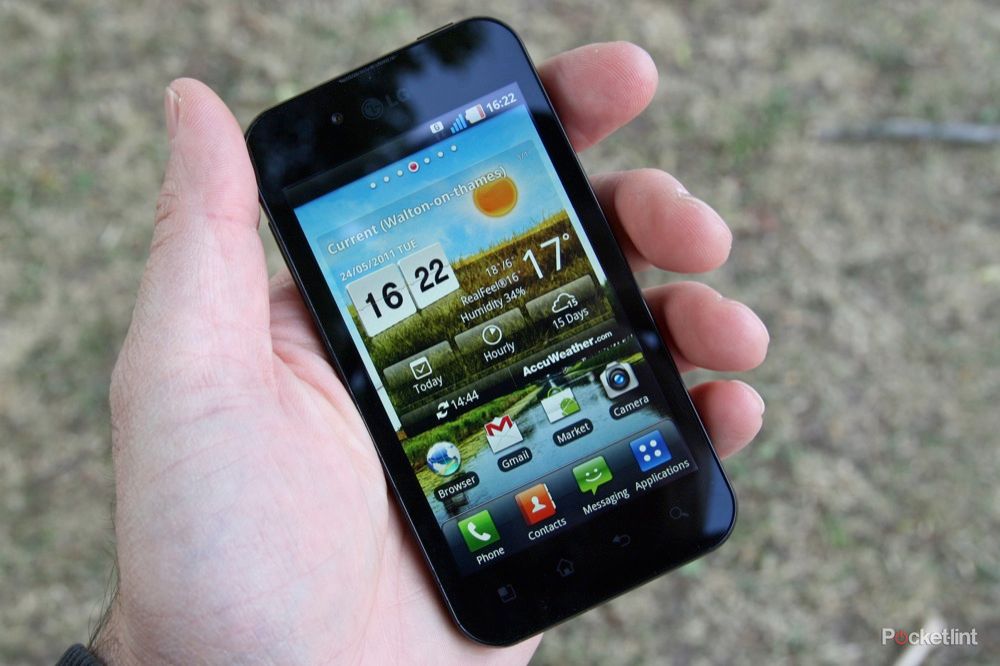
LG Optimus Black - 3.0 / 5
| FOR | AGAINST |
|---|---|
|
|
For some that may sound like a negative, but there’s certainly a place for a device like this. You’ll still get a smartphone that potentially offers a great overall experience, will do pretty much all there is on Android, but won’t cost you the earth. It might be that you’d rather snap a bargain on an older existing device, but that would be to suggest that despite LG’s efforts, the Optimus Black has no merits of its own.
Black as the night
The LG Optimus Black has a rather elegant monolithic design. There is something industrial and refined about its simplicity, the matte finish meaning it stays free from fingerprints. It is a contrast to the glossy rivals and like the rare matte black custom BMW or Mercedes you see, we can’t help liking it.
The edges are slightly sharp, quite a contrast to the curves of something like the HTC Desire S, but after a couple of days we didn’t find that as annoying as we first thought we might. The top edge is sharp however and if you spend a lot of time with the phone pressed against your ear you’ll soon feel it. Whilst we are on the subject, we found that callers were clear and we had no problems making and receiving calls.
It was launched as the “world’s slimmest” at 9.2mm, a claim that was dashed and dashed again by the Xperia Arc and the Samsung Galaxy S II. But outside being able to pin that badge to your phone, we’re in a place where it is slim enough to slip into any pocket and we’re not going to quibble over 9.2 or 8.7mm. Otherwise it measures 122 x 64mm, typical for a device with a 4-inch display.
What’s on display?
LG talked up their NOVA display at launch, telling us that it was their best display. We always wondered why they would put their best display in their second-tier device and we can’t help thinking that this was about wanting something to say. Its companions boast a 3D display and dual core processor respectively; the Optimus Black, it seems, is pushed as the one with the display.
2011 has been the year of mobile phone displays. A standard was set in 2010 by the Samsung Galaxy S (iPhone 4 aside) and the Nexus S which it seems others are now keen to beat. Compared to 2011’s displays, the Galaxy S now looks rather yellow, whilst we have impressive performance from the likes of the Xperia Arc and the Galaxy S II. We were even mightily impressed with the display on Optimus 2X, offering good bright whites and plenty of vibrant colour. The Optimus Black, ironically, is noted for its 700nits display, meaning it should perform better outdoors.
It certainly doesn’t struggle in bright conditions. There is plenty of brightness at your disposal, with LG adding an extra option to the settings so you can choose between two settings for “Automatic brightness”: Optimised brightness or Power saving. There is again vibrancy and punch to colours and nice bright whites, although they do look slightly warmer than the LG Optimus 2X, which with a slightly cooler tone is perhaps the more realistic. Viewing angles are perfectly acceptable too, so we have very little to complain about with the display.
The resolution comes in at a regular 800 x 480 pixels, offering a respectable pixel density of 233ppi. We’re still happy with this resolution, but moves are being made up the scale, with the Motorola Atrix and HTC Sensation both offering higher resolutions. The difference in general use is slight, but it means that you’ll have to zoom a little more to resolve fine text - if your eyes are up to it of course.
The LG effect
Whilst HTC take over your phone with HTC Sense and Motorola give you Motoblur, the LG is a much lighter take on Android, much like Samsung. A selection of widgets and visual tweaks make up the mainstay of the customisation they’ve dabbed over the top of Android 2.2 and we like it.
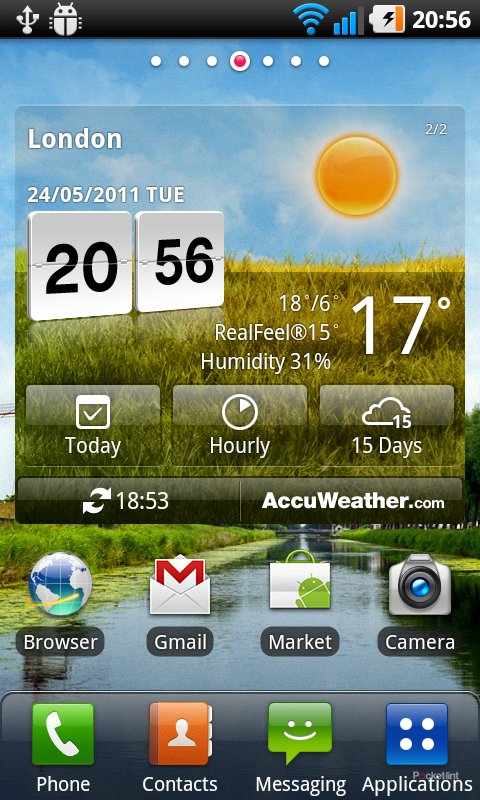
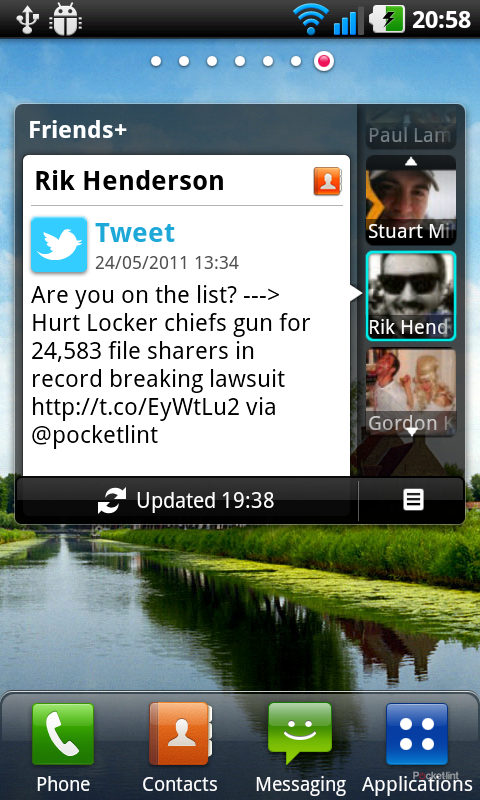
While we’re not complaining so much about Android 2.2 on budget devices, at this level - like the HTC Incredible S - we expect to the latest version of Android. After all, a whole selection of manufacturers are shipping with Android 2.3, so why not LG? In reality the differences are minimal in practical application as you’ll find that from a features point of view Android 2.2 was a more significant update than Android 2.3, however we know that Android fans love to be up to date. Buying the LG Optimus Black on day one won’t give you that.
The arrangement of the customisable desktop is now mostly familiar to Android users, so you can quickly make the phone yours and bring to the front the information that is most important to you. LG have broken the menus down into pre-installed applications and then your downloads, with the ability to add and customise sections within the menu. Also on offer are pages or a straight alphabetical list if you prefer.
LG have changed the keyboard slightly, with predictive suggestions that are mostly useful. You never feel like you have the fluidity that you get from something like SwiftKey, a worthy purchase to replace the preinstalled offering. But text entry is smooth enough and we found that the keyboard would keep up with us when bashing out angry emails.
Entertain me
LG have supplied their own versions of Facebook and Twitter to hook straight-up to your social networks (along with MySpace). In reality these apps don’t add anything that you won’t already find in the native apps you can download from the Android Market and in truth we prefer the originals. Simply installing the native apps gives you the benefits of sharing options and contact integration and so on, leaving LG’s versions offering little new. The one thing they do offer is integration into a “What’s New” app, which is essentially a universal inbox and if you don’t use LG’s apps, you don’t get included. There is also a Friends+ widget, which lets you allocate people to follow, so you can instantly get to their updates as well as a Social Feeds widget.
The other pre-installed app is SmartShare, a networking application that will find content on your sharing computer or media server and offer to play it. However it wouldn’t play on the Optimus Black itself, unlike the Optimus 2X, that under the same conditions offered to play the video on the phone itself. That means the Optimus Black can only really be the middle player and collect content to play on something else, like a DLNA TV.
Also, unlike the Optimus 2X, the Black doesn’t have an HDMI output or the video skills that its bigger brother does. In fact video support seems rather light weight, so despite having a great display, it isn’t as accomplished at filling it with glorious video as some rivals. It refused to recognise our regular set of HD files, but handled SD DivX and MPEG4 without issue - although it touts DivX HD support on the box (which is refused to recognise). The LG Optimus Black also offers Dolby Mobile, so once playing video, a tap of the on-screen icon will change the sound profile. It doesn’t discern between headphones and the built-in speaker, and is only really effective when using headphones but goes give you a nice final result.
The music player is essentially the stock Android music player which is adequate, but with a growing number of music options on the Android Market, from Amazon MP3 to DoubleTwist to Spotify, you’re spoilt for choice. There is also an FM radio on board for which you’ll need to have your headphones connected.
Cutting to the core
Of course you get all the normal benefits of Android 2.2 and essentially on an entertainment front that means Flash video support in the browser which we had no problems with. You’ll be able to hook-up with BBC iPlayer to catch up on TV you’ve missed and snack on other online videos although things are a little slower to get going than the current market leaders.
You’ll get full access to the Android Market so you can indulge in the latest apps, even if the Optimus Black won’t be the gaming device that some others will. You’ll still get on with Angry Birds (as you pretty much will on any Android phone) but with people starting to push more complicated mobile games, we’ll probably reach a stage where devices that are capable and swift in most areas might not be able to keep up - especially if you find yourself with a 2-year contract.
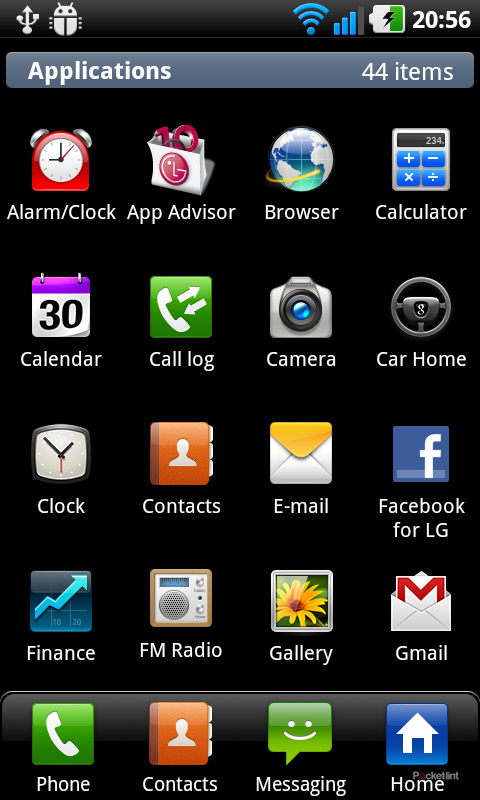
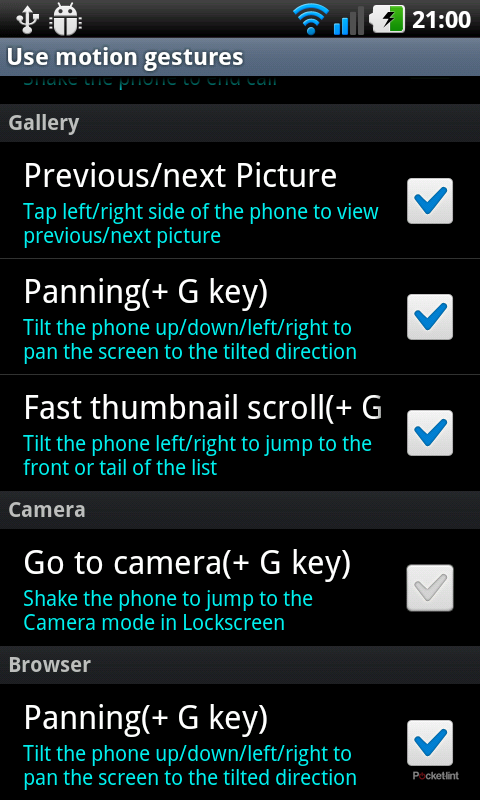
But sticking to the basics, the Optimus Black works admirably. The connected experience of Android is all very smooth, with Gmail, mapping, contact, calendar and the browser not suffering because of the second-tier specs. The browser might show a little lag, but on the whole, it is fast enough to draw your pages, zoom and scroll. The screen space on offer makes the Optimus Black a nice device for browsing, so you can keep in touch with everything on the go.
Sitting under the skin you do get a 1GHz processor with 512MB RAM, so it’s no slouch overall. The thing that did cause us the most concern was battery life. We know that battery life is an issue for modern smartphones, few will last the day and heavy continuous use will leave many dead within hours. We know this and take moves to preserve battery as and when we need to. However, during testing we found that the Optimus Black would empty itself within 7 hours or so, even when we weren’t doing much with the phone for large portions of time. It has a 1500mAh battery, so we were expecting more from it. Like all these things battery life depends on use, but you need to be prepared to rush for a charger so you're not left high and dry on a night out.
Say cheese
Around the back of the Black is a 5-megapixel camera which performs well in daylight but less so as the light drops. It returned some great colours and plenty of detail in good lighting conditions and there is a range of shooting options - the vivid setting will give you richer colours, but overall the options are pretty much par for the course. Noise is present in pretty much all shots, from low light conditions to the skys on clear days, so it won't replace a proper camera. It is an autofocus camera, but lacks more advanced focusing we’re starting to see elsewhere, like touch focusing. A solitary LED flash sits in support, and like most such flashes, doesn't really add much to the equation. There is also a forward facing camera.
The autofocusing does work rather well in video which offers 720p capture at the highest settings. It gives you continuous AF whilst recording, so things stay reasonably sharp whilst you are filming. Strangely all the HD video samples we shot came out letterboxed, although reporting they were 1280 x 720 (16:9), they looked more like 21:9, and played distorted on our Mac and once sent to YouTube for sharing (including direct upload from the phone).
This is the first time we’ve seen this from an Android device and looks like a bug lurking in HD video capture, so it’s difficult to directly assess the quality that it can produce. It looks fine on the phone and in lower resolution capture, but once extracted the distortion destroys it. There is also a noticeable delay when starting HD video capture, suggesting that in reality it can’t keep up with what you are doing.
Dare to be different
The eagle-eyed amongst you might have noticed an additional button on the outside of the phone. We’ve seen all sorts of buttons that are useful recently: camera buttons, a Spotify music player button, info button. But LG have opted for a G button to support the range of gestures they have enabled in the phone. Fortunately, all are controlled through the settings menu so you can see exactly what you are dealing with (pictured above).
Holding the G button will let you pan the screen in various applications. For example, you could move around a web page by holding the button and tilting the phone. The huge problem we have with this is that presumably you’re looking at the phone so you can see the screen - tilting it means you can't which doesn’t make sense. Plus, moving around Android isn’t difficult - a light brush of the thumb will scroll through a page anyway, so why involve a button and a flick of the wrist?
Other gestures involve holding the G button and shaking the phone. You can answer a call by pressing and shaking, rather than via the usual on-screen prompt. That’s great but shaking the phone isn’t always the most secure way to answer it: a call comes through to let you know you’ve just secured a pay rise and you’ve sent the phone skittering across the train carriage.
Then there are taps, and taps and holds and in truth we abandoned the gestures in their entirety butaccept that some might find a use for them.
To recap
There are a number of irritating problems with the Optimus Black which doesn't offer quite the complete experience we'd expect. Some of this could be easily fixed with software, but at the moment, there are better options elsewhere

